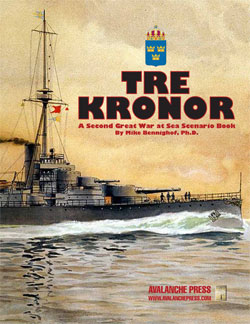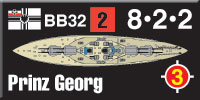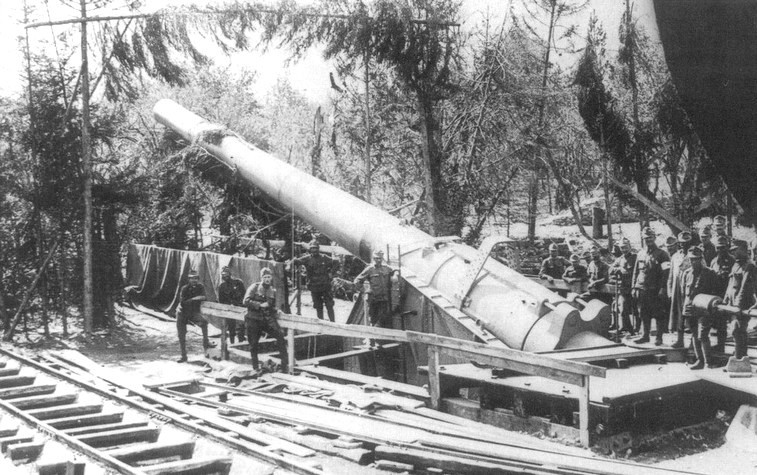Tre Kronor:
Germany’s Lost Battleships
by Mike Bennighof, Ph.D.
September 2023
 In our actual history, Germany paused dreadnought building for Fiscal Year 1912, laying down a single battle cruiser but no battleships. Our Second Great War history follows the increased building program laid out in our Great War at Sea: High Seas Fleet book, which looks at what a German fleet might have looked like, had Germany actually embarked on a dreadnought arms race in the years for the First World War. In our actual history, Germany paused dreadnought building for Fiscal Year 1912, laying down a single battle cruiser but no battleships. Our Second Great War history follows the increased building program laid out in our Great War at Sea: High Seas Fleet book, which looks at what a German fleet might have looked like, had Germany actually embarked on a dreadnought arms race in the years for the First World War.
Since the High Seas Fleet did not ask for dreadnoughts in 1912, the ship they would have laid down under that budget never had its design formally approved. It’s likely that the ship would have been similar to one designed for the Royal Netherlands Navy, with eight 350mm (13.8-inch) guns arranged in four twin turrets, what was becoming a standard battleship layout with two of them forward and two aft in super-firing pairs. The Dutch considered arming the ship with British-made 13.5-inch or 14-inch guns instead of the Krupp 350mm initially offered.
The coming of the First World War ended the Dutch consideration of new dreadnoughts, but in our story a very similar ship is approved by the High Seas Fleet with five ships laid down in 1912. She’s heavily influenced by the preceding König class, but without an amidships turret. The German Admiralstab also looked at a design with triple turrets for 305mm (12-inch) guns, but after studying the Austro-Hungarian battleship Viribus Unitis’ triple turrets the naval design bureau recommended against it. They felt the mechanism overly complicated, were concerned by the size of the opening in the armored deck required for the bigger turret’s barbette, and pointed out that an unlucky hit that knocked out a turret would remove three rather than two guns from action.
 Had the ship been built she would have been very similar to König other than her armament and turret layout, with the intense “honeycomb” internal subdivision common to German dreadnoughts and a coal-fired, turbine-driven power plant designed to provide 21 knots. The 350mm SK L/45 actually matched the range of the 380mm (15-inch) SK L/45 fitted to the Baden class that followed them, with a shell about 80 percent of the weight of that fired by the bigger gun. The same weapon would have armed the Mackensen-class battle cruisers, and the Austro-Hungarians chose a very similar Skoda gun for their Ersatz Monarch class dreadnoughts. Had the ship been built she would have been very similar to König other than her armament and turret layout, with the intense “honeycomb” internal subdivision common to German dreadnoughts and a coal-fired, turbine-driven power plant designed to provide 21 knots. The 350mm SK L/45 actually matched the range of the 380mm (15-inch) SK L/45 fitted to the Baden class that followed them, with a shell about 80 percent of the weight of that fired by the bigger gun. The same weapon would have armed the Mackensen-class battle cruisers, and the Austro-Hungarians chose a very similar Skoda gun for their Ersatz Monarch class dreadnoughts.
The ships – we’ve named them the Prinz Georg class, though since they were never requested, let alone built, they received no official names – would have commissioned in the summer of 1915 and after exercises in the Baltic Sea joined the High Seas Fleet late 1915 and early 1916, in time to see action at the Battle of Jutland. Their presence would have added a great deal to German combat strength, and would have allowed the High Seas Fleet to retire the pre-dreadnoughts of II Battle Squadron. The five ships of the class appear in Great War at Sea: High Seas Fleet in their World War One configuration.
After the negotiated settlement that ended the First Great War in our alternative history, the Prinz Georg class would have remained in service for a few years before going into reserve by 1922. Cost overruns in modernizing the preceding König class raised questions as to the utility of rebuilding them, and they were passed by for reconstruction in favor of the later ships armed with 380mm and 420mm guns.

The similar Skoda 35cm naval cannon, deployed as siege artillery on the Italian front.
The Vienna naval agreement indirectly encouraged the rebuilding of old battleships; the Turks made repeated efforts to buy the Prinz Georg class and the Austrians made an offer on the Mackensen class. Their hulls left no space to replace their relatively lighter main guns with heavier weapons, and unlike the battle cruisers their speed could not be increased without immense modifications. They remained forgotten in the back waters of Danzig’s harbor.
By the mid-1930’s, the political situation had changed. Increasingly virulent propaganda in the Entente countries led German analysts to believe that the French, Italian and Russian governments were preparing their people for war. All potentially useful warships needed to be made ready for a potential conflict.
In 1937, a year after work began on the Mackensens, Prinz Georg and her sisters finally entered the dockyards for modernization along the same lines as the Baden class. Her coal-fired boilers were replaced by new, more efficient oil-fueled models and her turbines were refurbished. That still wasn’t enough to increase her speed above the original 21 knots without lengthening the ship to improve her lines and fit larger engines. That expense wasn’t considered worthwhile.
Additional armor went over the magazines and engine spaces, and she received a thicker armored deck. Prinz Georg lost her torpedo tubes, and her original set of sixteen 150mm secondary guns in casemate mountings were replaced by eight newer 150mm L/55 SK C/28 weapons in four twin turrets, plus eight 105mm heavy anti-aircraft guns in four twin mountings. The relatively compact design did not allow for aircraft-handling facilities without removing some of the main armament, and so unlike most Imperial German battleships the class carries no helicopters.
As modernized, they’re the equivalent of the re-built British battleships with 13.5-inch guns (three classes of them). In our Second Great War story, they’re still working up when the war breaks out and are with the Baltic Training Division based at Kiel. Later they support German, Latvian and Estonian troops defending against the relentless Russian offensives and are part of the fleet assembled to face the Russians in case they break through the minefields blocking the mouth of the Gulf of Finland.
Unlike the other classes of Imperial German battleships, they don’t appear in The Cruel Sea; when I designed that expansion set I didn’t intend to include them at all in the story, but a fan named Harry convinced me to add most of the additional ships shown in Great War at Sea: High Seas Fleet. Prinz Georg and her sisters are found in Second Great War at Sea: Swedish Steel, an expansion book for the Sea of Iron game.
Click here to join the Gold Club.
See your Gold Club Insider newsletter for ordering information.
Sign up for our newsletter right here. Your info will never be sold or transferred; we'll just use it to update you on new games and new offers.
Mike Bennighof is president of Avalanche Press and holds a doctorate in history from Emory University. A Fulbright Scholar and NASA Journalist in Space finalist, he has published a great many books, games and articles on historical subjects; people are saying that some of them are actually good.
He lives in Birmingham, Alabama with his wife, three children, and new puppy. He misses his lizard-hunting Iron Dog, Leopold.
Want to keep Daily Content free of third-party ads? You can send us some love (and cash) through this link right here.
|
